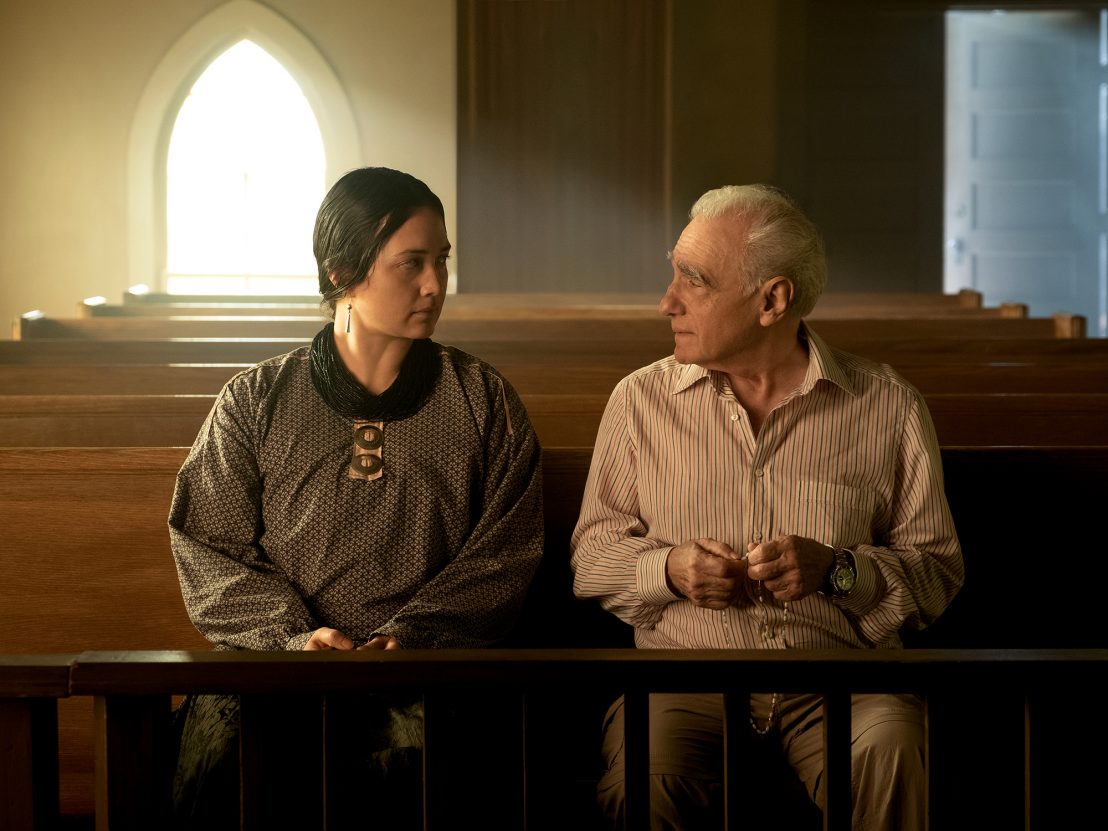
Speaking at the global press conference for Killers of the Flower Moon, Martin Scorsese provides insights into his research process and use of music, as well as discovering Lily Gladstone via Kelly Reichardt's Certain Women.
Killers of the Flower Moon, Martin Scorsese’s sorrowful epic of twisted love, genocide, and the evildoing of white America, hits cinemas this weekend to overwhelming acclaim. Adapted from journalist David Grann’s book about a rash of wealth-motivated murders of Osage people on their oil-rich Native American reservation back in the 1920s, it’s a film of devastating cumulative power.
Scorsese brings in Lily Gladstone, Leonardo DiCaprio, and Robert DeNiro as the triumvirate of major players in a sprawling tapestry of conspiracy, greed, and racist betrayal. At the global press conference for the film, the veteran director spoke about the importance of historical accuracy, the power of his collaboration with actors, and…Leonardo Dicaprio’s love for the Criterion Channel.
What steps did you and the production team take to ensure that the Osage community felt accurately represented?
It was very important for me, as soon as they gave me the book. I had an experience in the ‘70s where I began to become aware of the nature of what their situation was, and still is. I had been blithely unaware of that, in my 20s. How do you deal with that culture in a way that’s respectful and also not hagiographic or falling into the Rousseau noble native thing? How truthful can we be and still have authenticity and respect?
Ultimately, this was supplemented by the times that we went out to Oklahoma and met with the Osage. My first meeting was with Chief Standing Bear and his group: Julie and Addie Roanhorse, and Chad Renfro. And it was very different from what I expected. They were naturally cautious. I had to explain I was just gonna try and deal with them as honestly and truthfully as possible. We weren’t going to fall into the trap; of the cliche of victims, or the drunken Indian, and tell the story as straight as possible. What I didn’t really understand is that this was an ongoing situation in Oklahoma. The families and descendants are still there.
And what I learned from meeting with them, having dinners with them – even Margie, the relative of Ernest Burkhart – was that a lot of the white guys out there, they were good friends. Henry Rome was Bill Hale’s best friend, and yet he killed him. So what is it about us as human beings that allows for us to be so compartmentalised?
The film takes place in Oklahoma, and you were adamant about shooting there. What was your impression of it and how did you begin to visualise the film taking place there?
MS: I think the first time was in 2019. there before COVID. And for me, you know, I am a New Yorker. I grew up in the Lower East Side of New York. I’m very urban. I don’t understand weather that much, or where the sun is when you’re on the set. I was very surprised to learn that it set in the West. That’s because I was driving down Sunset Boulevard one time about 30 years ago, and I saw the sun setting. And I said, “That’s great. It’s Sunset Boulevard. The sun sets in the west. Now I get it.”
Anyway, when I got there, all I can tell you is those prairies are quite something. And they open your mind and your heart. They are just beautiful. And especially, driving on these roads and on both sides, wild horses, bison, and cows. And so, I said, “Where do I put the camera at this point? How much of the sky? How much of the prairie? Should it be 1.85 or should it be 2.35? We gotta go 2.35, you know, ‘cause I wanna see more of this land.” And then I began to realize that the land itself could be sinister. In other words, you’re in a place like this, and you don’t see people for miles? You can do anything. Particularly, it turns out, a hundred years ago. It’s a wide-open territory.
You have the law, but the law doesn’t work the same way. The place, as beautiful as it is, can shift to being very sinister. And what I wanted to capture, ultimately, was the very nature of the virus or the cancer that creates this sense of a kind of easygoing genocide.
Can you discuss how you wanted to tell the story in a way which was both emotionally resonant but also historically accurate?
That was the constant: historically accurate. Or, truthful. We had a lot of support from the Osage authority, the experts who were giving us indications of how to go about these things. Johnny Williams, and a number of other people. We tested the accuracy of the rituals, the baby namings, the wedding, the funerals. In some cases, there was wiggle room because honestly, the last two generations of Osage were taken out of their experiences because they had to become White European. They had to become Christians, Catholics, whatever. But in fact, now there’s a new resurgence of learning the language. And we had language teachers there, and Lily Gladstone, Leo, and De Niro learned the language. De Niro really fell in love with it, and wanted to do more scenes in Osage. So they were learning to put their culture back together again through this movie, and we were going with them.
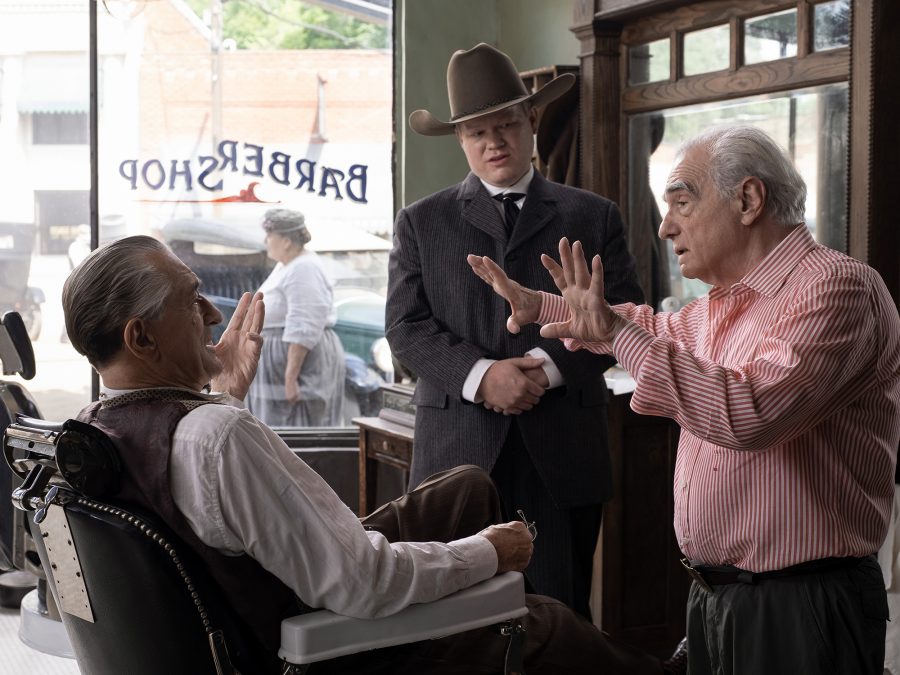
People are going to be really impressed with Lily Gladstone’s performance. Can you talk a little bit about the first thing you shot with her?
[Casting director] Ellen Lewis showed her to me in Certain Women, Kelly Reichardt’s film, and I thought she was terrific. Then Covid happened and we weren’t able to meet. But we met on Zoom. And I was very impressed by her presence, the intelligence, and the emotion that’s there in her face. But you see it – there’s something working behind the eyes.
And I think the first big scene we did was one of my favourite scenes, where she has dinner with Ernest alone. And she’s questioning him, a little bit of an interrogation. What are you doing here? All that sort of thing. [….] And of course there’s the scene where he’s driving her in the taxi, in only one shot. […] She says something in Osage. […] And he goes, “Well, I don’t know what that was, but it must have been Indian for handsome devil,” And that’s an improv, and you see her laugh for real. So in that moment, you have the actual relationship – and it’s actually between the two actors.
So these were the two moments we felt very comfortable with her. We had a feeling that we needed her to help us tell the story of the women there. We would always check with her and work with her on the script. There were scenes that were added, scenes were rewritten constantly.
You’ve formed a 20-year partnership with Leo DiCaprio and a 50-year partnership with Robert De Niro. Why have you returned to them both so often over the years, and what has stood out to you most about their work on Killers of the Flower Moon?
Well, in the case of Robert De Niro, we were teenagers together, and he’s the only one who really knows where I come from, the people I knew, and that sort of thing. We had a real testing ground in the ’70s, where we tried everything, and we trusted each other. It’s all about trust and love. And that’s a big deal, because very often if an actor has a lot of power, and he had a lot of power at that time, an actor could take over your picture. If the studio gets angry with you, the actor comes in and takes it over. With him, I never felt that. I never felt that. There was freedom; there was experimenting.
And years later, he told me he worked with this kid, Leo DiCaprio in This Boy’s Life, and he said, “You should work with this kid sometime.” It was just casual. But it wasn’t casual. He rarely gave recommendations. Years go by, and I’m presented with Leo, with Gangs of New York. He made Gangs possible, actually. He loved the pictures I’d made, and he wanted to explore the same territory.
We really found out that even though there’s 30 years difference, he has similar sensibilities. You know, he’ll come to me and he’ll say, “Listen to this record,” and it’s Louis Jordan and Ella Fitzgerald. I grew up with it. But it’s interesting. He’ll call me and say, “You know, I had a cold and I was looking at Criterion films, and, you know, I wanted to catch up on some of these classics, and I saw this incredible movie. It’s incredible. It’s a Japanese picture. It’s called Tokyo Story. Did you ever see it?” This was last year. It’s interesting to me that he’s open to older parts of our culture.
Your films have a musicality through framing, camera movement, sounds, silences, and cutting. What informs the rhythm of your work, and what music were you hearing for this film?
The boxing scenes in Raging Bull are like the ballet scene in The Red Shoes, where everything is seen and felt from inside the ring, inside the fighter’s head, the way everything is felt and seen inside the dancer Moira Shearer’s head in Red Shoes. So the covering of the band, singing The Weight in The Last Waltz, doing it in the studio was very much according to the music, to the different bars of music and how a camera would move, et cetera.
And sometimes I play the music back on the set. In the case of Goodfellas, for a number of times the end of Layla was played back as we were doing the camera moves. And so for me, ultimately, the movie getting to being like a piece of music. That’s why this picture is more like, somebody pointed out recently, like Bolero, where it starts slower and moves slowly and in circles and in circles, and then suddenly gets more intense and more intense, and suddenly goes more and more until it explodes, yeah, right?
I couldn’t verbalize it the way I am now, but I felt it in the shoot and in the edit. And a lot of the music that kept pushing me was what Robbie Robertson had put together, particularly that bass note that he was playing when when Ernest drops Mollie off for the first time at her house. She looks at him, she turns, and all of a sudden you hear boom, boom, boom, boom. I said I wanted something dangerous and fleshy. And sexy, but dangerous. And that beat took us all the way through.
I added some music from Harry Smith’s anthology of folk music – one particular piece called The Indian War Whoop by Hoyt Ming and His Pep Steppers was very, very important. Bulldoze Blues by Henry Thomas, which became Going Up The Country by Canned Heat. […] But the drive of the movie is what Robbie put down, and we pulled it through that way.
Published 19 Oct 2023
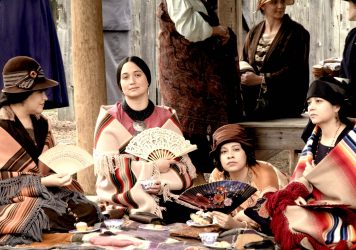
Martin Scorsese’s wistful remembrance of tragedies that befell the Osage nation is a film of high seriousness and low spectacle.
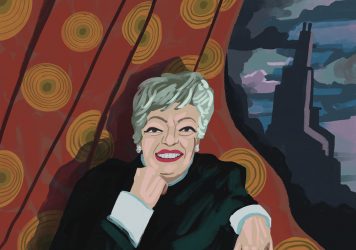
Ahead of the BFI's landmark Powell & Pressburger retrospective, the legendary film editor speaks about her relationship with Michael Powell, the process of restoring film, and how Powell & Pressburger influenced Killers of the Flower Moon.
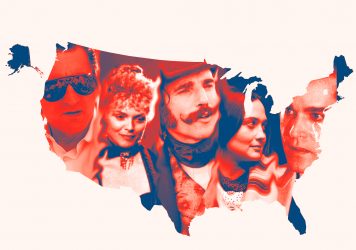
By Paul Risker
Across seven decades, Martin Scorsese has been constructing his own vision of the United States' bloodstained mythology.